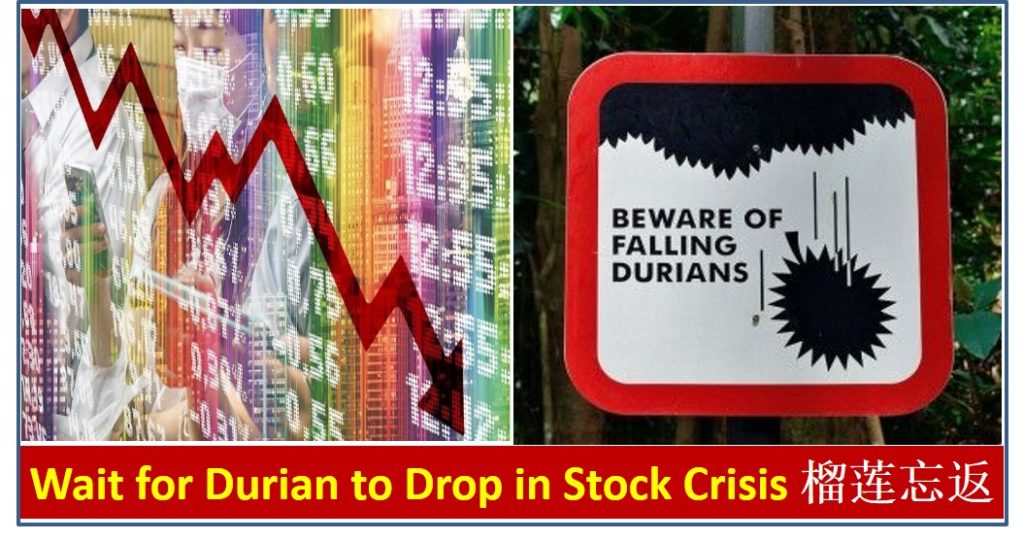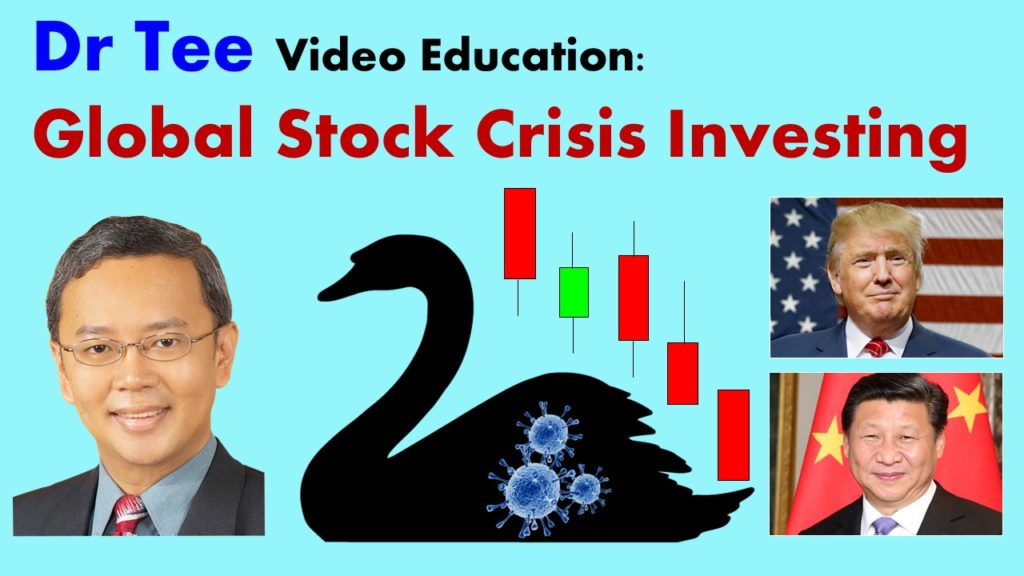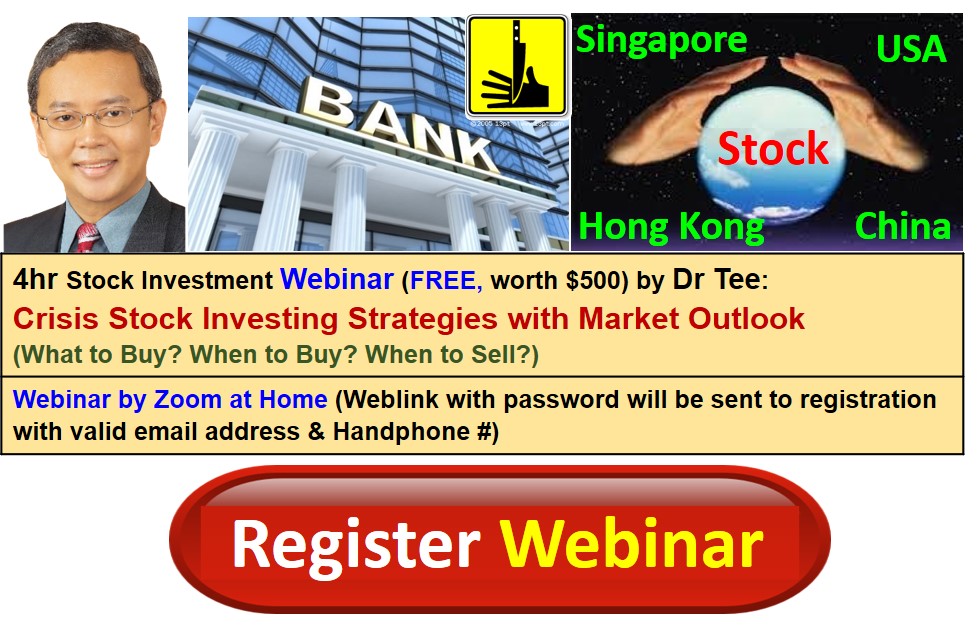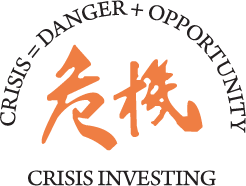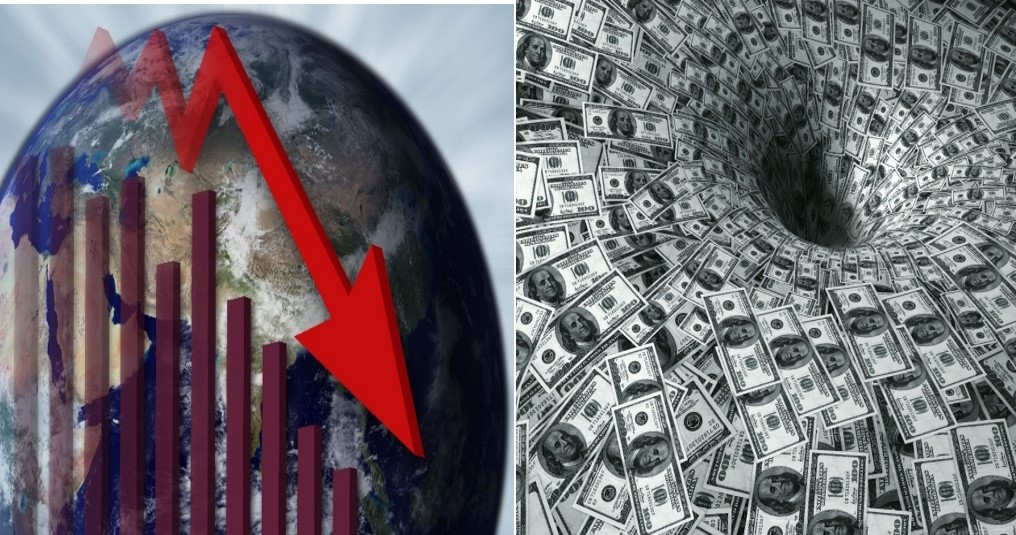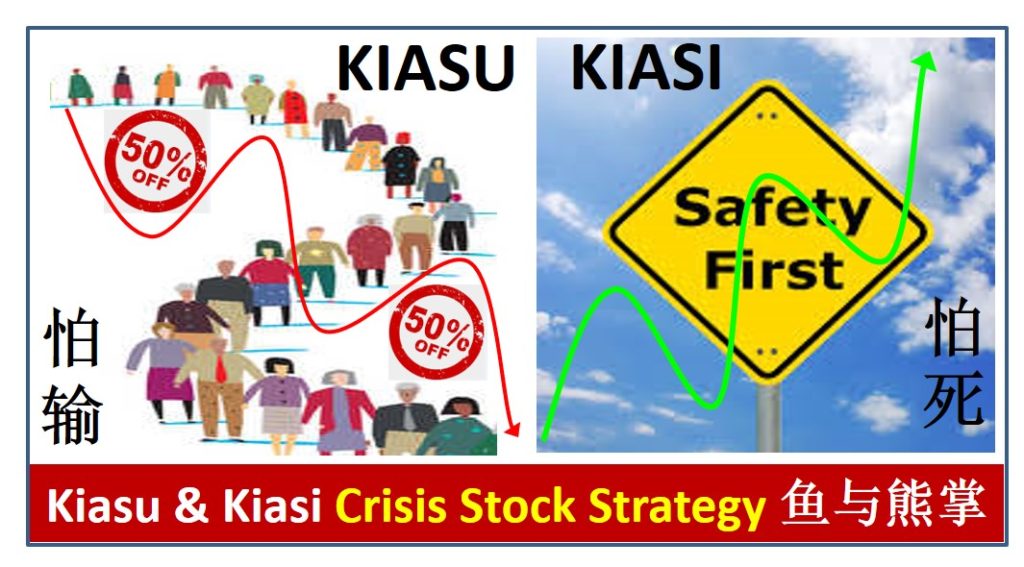
There are 2 distinct fearful personalities in each person (depending on condition): Kiasu (怕输) and Kiasi (怕死). Kiasu is “Fear of Missing Out” (FOMO), eg. commonly seen in Great Singapore Sales (long queue overnight for certain special offer), afraid of missing the opportunity. Kiasi means “Fear of Death”, safety first in most actions with low risk. Of course, it is possible to have Kiasu and Kiasi together, eg. long queue in supermarket, afraid the food supply may be limited during Coronavirus crisis.
It is not a shame to be Kiasu and/or Kiasi as it is human nature. A smart investor may align one’s unique fearful personality with opportunities in global stock market crisis. This way, the inner potential could be fully maximized to profit from giant stocks at low optimism. Let’s study in more details on both crisis stock strategies.
1) Kiasu Crisis Stock Strategy
This is suitable for contrarian investor with counter-trend investing strategy during bearish stock market, especially when stock prices are far below the intrinsic value, dropping below low optimism <25%. Warren Buffett could be the best example of this type of investor, usually show hands when market is crashed, “be greedy when others are fearful”.
Similar to Great Singapore Sales, when a shopper has only $100 budget, seeing a handbag with 50% discount at $50, may buy 1 first due to fear of missing out (Kiasu) as the opportunity may be on available on that day. It is crucial to reserve the capital as there be another better offer elsewhere or another day with 70% discount.
Contrarian investor is similar to smart shopper, would invest in giant stocks with strong business fundamental with multiple entries. For stock capital of $10k, one may split into several investments, eg (10 x 10%) or (5 x 20%) or (2 x 50%), etc, diversifying over different prices, each entry could be X% apart, eg 5-10% lower each time to justify further investment. This way of average down at low optimism prices would help to get as close to bottom price as possible, even no one would know what will be the lowest price.
Assuming the crisis (buy low get lower) may last for 1-2 years, investing with giant dividend stocks (including giant REITs) with overt 5% dividend yield would help to strengthen the holding power as during this period, one could enjoy 5% passive income (assuming worst crisis may even cut 50% of dividend, left only 2.5%, still higher than bank interest rate of 1+%). When crisis is over (no need to time the market), naturally the investor would enjoy the capital gains when stock prices start to soar, supporting by growing business of giant stocks. Then, contrarian investor may need to plan for when to sell or how long to hold (similar to last few years when global stock markets were in high optimism >75%).
Common failure of this strategy by beginner is to buy weak fundamental stocks at “historical low” price or last 10 years low, which may become lower in future, company may go bankrupt during crisis (eg. certain weak airlines or F&B stocks in Coronavirus crisis), may not have chance to wait for share price or business recovery.
For this strategy to work, contrarian investor requires to invest in a portfolio of giant stocks at low optimism (ideally <25%) with strong business fundamental (following Dr Tee criteria, there are over 1500 global giant stocks). If capital is limited, one may invest in major stock index ETF at low optimism (eg. Hong Kong Hang Seng Index ETF, Singapore STI ETF, China SSEC ETF, etc) which indirectly has diversification over a portfolio of blue chip stocks (although not all are giant stocks).
2) Kiasi Crisis Stock Strategy
This is suitable for trend-following investor or traders, waiting for reversal of share prices from bottom (paying premium of higher prices similar to insurance to ensure price is back to uptrend), still buying at low optimism <25% (but in uptrend price direction). This is integration of trading (trend-following) into investing (waiting for price below intrinsic value of giant stocks).
Safety is important for kiasi traders who could not let the capital stuck in the stock market as regular income (capital gains within weeks or months) is important for short term to mid term trading. Therefore, a stronger uptrend over weeks or months need to be established first (reg. higher highs and higher lows price pattern) before entry.
In case the uptrend or reversal could be a technical rebound, a trader needs to do further deeper market analysis to understand the competing forces of greed (eg. unlimited QE, less cases in Coronavirus, etc) and fear (eg. serious Coronavirus condition, weaker economy and business). For risk management, a trader may apply S.E.T. (Stop Loss, Entry, Target Prices) trading plan, following strictly. When direction is correct, a trader may add more position in the same direction (eg. uptrend prices).
For trend-following investors or traders, the risk of stuck in long winter (low optimism period such as global stock crisis, Global Financial Crisis or even Great Depression) is lower than counter-trend investors, therefore possible to consider growth stocks (little dividend) or some midfielder stocks (mix of growth and dividend stocks), focusing more on capital gains in a more bullish stock market.
==========================
There are about 100 global giant dividend stocks (suitable for Kiasu contrarian investors) and 300+ global giant growth stocks (suitable for Kiasi trend-following investors or traders). It is possible for a smart investor to integrate both kiasu and kiasi strategies together, investing with multiple entries in both bearish and when reversal to bullish stock market with growth dividend giant stocks at low optimism, having the best of 2 investing worlds (鱼与熊掌、实可兼得).
==================================
Drop by Dr Tee free 4hr investment course to learn how to position in global giant stocks with 10 unique stock investing strategies, knowing What to Buy, When to Buy/Sell.
Learn further from Dr Tee valuable 7hr Online Course, both English (How to Discover Giant Stocks) and Chinese (价值投资法: 探测强巨股) options, specially for learners who prefer to master stock investment strategies of over 100 global giant stocks at the comfort of home.
You are invited to join Dr Tee private investment forum (educational platform, no commercial is allowed) to learn more investment knowledge, interacting with over 9000 member.

